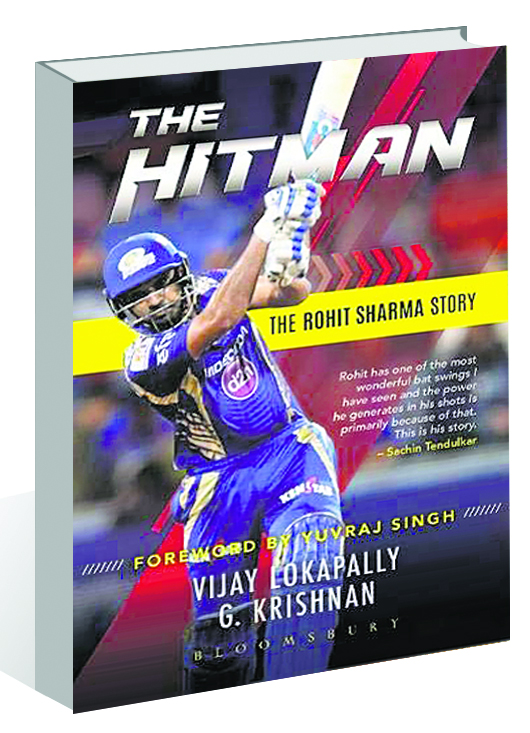The Hitman: The Rohit Sharma Story by Vijay Lokapally and G Krishnan. Bloomsbury. Pages 191. Rs499
Book Title: The Hitman: The Rohit Sharma Story
Author: Vijay Lokapally and G Krishnan
Rohit Mahajan
Rohit Sharma, probably the most talented Indian batsman to emerge after the year 2000, is treading the path on which walked Yuvraj Singh not long ago. Yuvraj wanted to excel in Test cricket — that’s where you earn the respect of your peers. Yuvraj’s wish remained unfulfilled, but he did become an all-time great on the basis of ODI performances only.
Sharma is already hailed as a great on the basis of his feats in ODIs and the IPL, and this biography adds to the hype.
It’s an extraordinary tale — related here in the manner of a paean, uncritical and laudatory — of opportunities created by his talent and labour; a touching story of a kid whose school fee was waived because his family couldn’t afford to pay it, who now hangs out with Mumbai’s elite, drives expensive cars and owns several houses.
The core of this book, comprising only 143 pages, excluding the statistical appendix, is a faithful documentation of his cricketing exploits, match after match, quoting at length him and others from post-match interviews. Yet, in this narration of matches, events and more matches, the essence of a biography — a candid look at the subject — seems absent.
The story is more intimate when his friends Manoj Tiwary and Abhishek Nayar, or coach Dinesh Lad, talk about his rise.
Sharma was only 20 when the IPL arrived; he belonged to the first generation of cricketers who became multi-millionaires at 20. The sudden riches nearly derailed Sharma — he put on weight, became a party animal, and, as Herschelle Gibbs wrote, earned the reputation of a formidable drinker. Out of the national team, he was on the brink. Coming back from the edge, goaded by his loyal friends, who would wake him up early, make him run up and down the stairs, is the most amazing story of his revival — but it’s absent from this book. The effect of his ‘partying’ on his cricket isn’t explored — perhaps the writers don’t wish to delve into his personal life, but beating adversity is heroic, not embarrassing.
Sharma averages 25.36 in England, Australia, South Africa and New Zealand. He’ll be 34 next April, time is running out for him to become a Test great. His fans are content with his IPL trophies, and he recently put club over country when he opted to play on in the IPL with an injury that, according to Sourav Ganguly, was serious. He’s got three 200s in ODIs, but it’s in his Mumbai Indians shirt — logos and all — that he appears on the cover. A quarter of the book is about him at the IPL — implicitly, the writers give their nod to pop over classical cricket. Twelve years of IPL have transformed cricket and its story-tellers.
Sharma’s story is incomplete yet, and maybe he’ll become a great in Tests too. Perhaps there will be another edition of this book — more up-close, hopefully, and with better editing.














